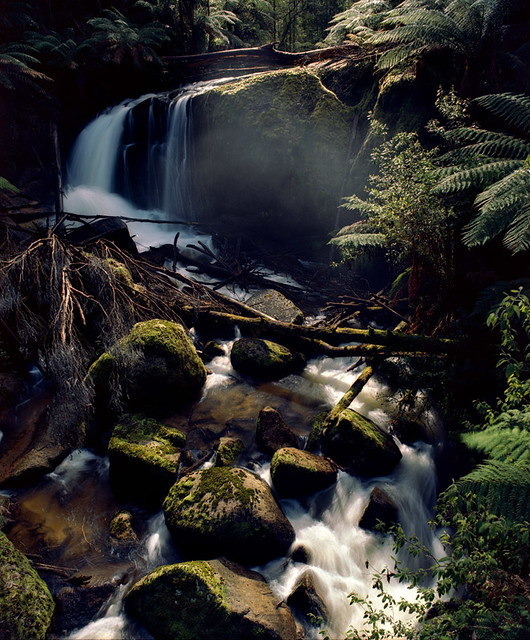Hi Daniel,
It is there for very high colour accuracy. Good E-6 cannot match good C-41 in colour (including gamut). This goes the same for maskless C-41, it cannot match masked C-41 in colour.
that may be right in theory or under scientific lab conditions.
But in real world it is a bit different:
If I send five E6 films for developing in the best five E6 labs, I will receive five
identical results.
If I send five C41 films in the best five labs ordering best scans and / or prints (development only makes no sense with C41), I will receive five
different results.
Because each lab use different technique, other scanners, profiles, different people as scanner operators, different paper.
Even if I use my best local C41/RA-4 lab here (they do great work) I get different results depending on the day, because of different staff, different people working there at the scanner with a different view on colors and contrast. The differences are not huge, but visible.
With E6 I get what I call the best 'color reliability'.
Furthermore we've done some color accuracy tests with different slide and CN films: Normed lighting conditions, color test charts and real life subjects with different colors and tones.
And then compared the results under the same lighting conditions with the real subjects we've shot.
The winner with the best color accuracy is Provia 100F. Its colors are nearest to the original colors, more precise results than Pro 160 NS, Reala, Portra (and of course Ektar).
I prefer C-41 for both landscapes and portraits, I have had many landscapes that couldn't be shot on E-6 due to contrast.
Such as;
I am doing a lot of landscape work as well, and often in high contrast situations. And I do this with slide film.
There are two very good to excellent methods to handle high contrast with slide film:
- using the old, for decades used zone system technique of diffuse pre exposure (you gain about one whole stop more contrast range)
- using modern cameras with modern balanced fill-in flash techniques; with this method I can manage even very high contrasts and nevertehless get both excellent shadow and highlight detail.
The simple trick is to reduce the power of the flash manually by -2/3 up to -3 stops, depending on your subject and the amount of shadow detail you want. You expose for the highlights for best highlight detail, and just add a little bit additional light for the shadows by using the balanced fill-in flash.
This technique works excellent if done right: Absolutely natural looking pictures with excellent shadow and highlight detail, and you don't even recognize that flash was used.
Therefore higher contrast situations don't worry me at all with slide film. It can be done successfully.
And so I am profiting from all other advantages of slide film, and not having a disadvantage.
I am using both CN and slide film. Horses for courses. Film choice is
not at all a religion for me.
CN mostly if I shot for other persons who want prints: Portrait, wedding, birthdays.
Slide for most of my personal work for best quality: Landscapes, night photography (the light look best on a lighttable or in projection), stills, architecture, travel, cars and motorcycles ( the splendor of chrome and coat of lacquer / varnish looks absolutely outstanding and as in real life in projection, it is impossible to get that real life look in prints).
When I project my landscape pictures on my 1m x 1,50m screen with my excellent projector and lenses, then it is like I am back at this place at the moment when I pressed the shutter. It is like a 'time machine'.
I don't get this feeling with prints.
And if I compare the color brillance, the almost three-dimensional look of the projected slide, the outstanding sharpness and resolution of my 1m x 1,50m projected slide with a print of 80cmx120cm or 1m x 1,50m, than the print can't compete at all with the projected picture.
The quality of projection is a league of it's own.
Cheers, Jan


